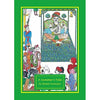- No products in the cart.
INSTANT DELIVERY
Shipping & Returns
 A Revolutionary Life
Rs. 250.00
A Revolutionary Life
Rs. 250.00
 A Summer's Tale
Rs. 314.00
A Summer's Tale
Rs. 314.00
 A Word Thrice Uttered
Rs. 350.00
A Word Thrice Uttered
Rs. 350.00
 Aashiqana Lucknow Diary
Rs. 450.00
Aashiqana Lucknow Diary
Rs. 450.00
Shipping & Returns
Find best artisans
In your need
For All Your Questions
Investigating the emergence of Hindi publishing in colonial Lucknow, long a stronghold of Urdu and Persian literary culture, Shobna Nijhawan offers a detailed study of literary activities emerging out of the publishing house Ga?g? Pustak M?l? in the first half of the twentieth century. Closely associated with it was the Hindi monthly Sudh?, a literary, socio-political, and illustrated periodical, in which Hindi writings were promoted and developed for the education and entertainment of the reader. In charting the literary networks established by Dularelal Bhargava, the proprietor of Ga?g? Pustak M?l? and chief Editor of Sudh?, this volume sheds light on his role in the development of Hindi language and literature, creation of canonical literature, and commercialization and nationalization of books and periodicals in the North Indian Hindi public sphere. Using vernacular primary sources and drawing on scholarship on periodicals and publishing houses as well as editor-publishers that has emerged over the past two decades, Nijhawan shows how one publishing house singlehandedly impacted the role of Hindi in the public sphere.
Investigating the emergence of Hindi publishing in colonial Lucknow, long a stronghold of Urdu and Persian literary culture, Shobna Nijhawan offers a detailed study of literary activities emerging out of the publishing house Ga?g? Pustak M?l? in the first half of the twentieth century. Closely associated with it was the Hindi monthly Sudh?, a literary, socio-political, and illustrated periodical, in which Hindi writings were promoted and developed for the education and entertainment of the reader. In charting the literary networks established by Dularelal Bhargava, the proprietor of Ga?g? Pustak M?l? and chief Editor of Sudh?, this volume sheds light on his role in the development of Hindi language and literature, creation of canonical literature, and commercialization and nationalization of books and periodicals in the North Indian Hindi public sphere. Using vernacular primary sources and drawing on scholarship on periodicals and publishing houses as well as editor-publishers that has emerged over the past two decades, Nijhawan shows how one publishing house singlehandedly impacted the role of Hindi in the public sphere.
| Product | Price | Quantity | Options | |||||
|---|---|---|---|---|---|---|---|---|
| Features |
| Availability: |
| Price |
| Options |
| Actions |
